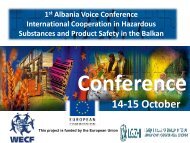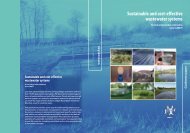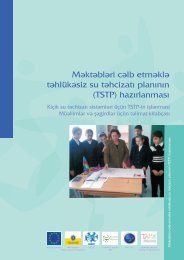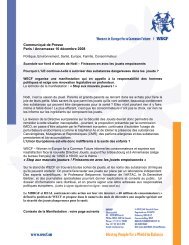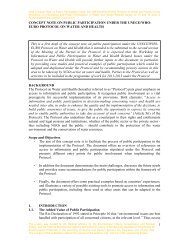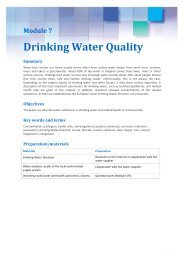Environmental measures to improve children's health - Health and ...
Environmental measures to improve children's health - Health and ...
Environmental measures to improve children's health - Health and ...
Create successful ePaper yourself
Turn your PDF publications into a flip-book with our unique Google optimized e-Paper software.
Hazardous chemicals &radiation4Country: RussiaProject: Reducing the risks of lead <strong>to</strong> childrenOrganisation: Far Eastern <strong>Environmental</strong><strong>Health</strong> FundRepresentative: Petr SharovEmail: psharov@fe<strong>health</strong>fund.orgChanging the earth<strong>to</strong> prevent lead poisoningEight years ago, Petr Sharov at the Far Eastern<strong>Environmental</strong> <strong>Health</strong> Fund looked at research from BunkerHill in Idaho, USA where action had been taken <strong>to</strong> reducelead contamination in the gardens of family homes. BunkerHill is an area contaminated by lead mining <strong>and</strong> smeltingplants. Knowing that the same problem existed in the miningareas of Dalnegorsk District, he decided <strong>to</strong> copy thesuccessful US model.He began work before he had managed <strong>to</strong> secure fullfunding for the project. Early activities included mapping themining areas for lead <strong>and</strong> cadmium, which were considered<strong>to</strong> be the two main <strong>and</strong> most <strong>to</strong>xic pollutants. In 2007,when full funding became available, medical teamsmoni<strong>to</strong>red local children for lead levels in their blood <strong>and</strong>provided information <strong>to</strong> parents on how <strong>to</strong> reduce theirchildren‘s exposure.educational advice <strong>to</strong> parents <strong>to</strong>ok place. By 2009, only 11%of children had lead levels above the safety limit.The challenge now is <strong>to</strong> reach families in the <strong>to</strong>wn of RudnayaPristan – the most contaminated part of the valley.During the first round of activities, the project activities didnot reach this area. About 60% of the 500 children living inthis community have blood lead levels above 10 ug/dl.Lead poisoning of children exists in many parts of Russia,Central Asia countries of Eastern Europe. The project wasexpensive (US$500,000 over two years) but the findingsshow that it works. The project would not have been possiblewithout the partnership of Blacksmith Institute <strong>and</strong> GreenCross Switzerl<strong>and</strong>. The organisers say that it is already beingcopied by a non-governmental organisation in Kazakhstan.They hope it can also be used as a model in other areas ofRussia where there is lead contamination.However, the biggest task, as in the Bunker Hill clean-upproject, was <strong>to</strong> remove lead-contaminated soil wherechildren play. Priority was given <strong>to</strong> playgrounds of youngchildren where lead in the soil was measured at over 500parts per million. Thanks <strong>to</strong> the efforts of the Far Eastern<strong>Environmental</strong> <strong>Health</strong> Fund, the contaminated <strong>to</strong>p-layer soil<strong>and</strong> s<strong>and</strong> in seven kindergartens has now been replaced withclean earth. This represents a <strong>to</strong>tal area 16,400 square meters.The benefits for children‘s <strong>health</strong> have been encouraging.In 2007, 22% of children in the Dalnegorsk District had bloodlead levels over 10 ug/dl (international safety st<strong>and</strong>ard). Overthe next two years the playground soil replacements <strong>and</strong>Children are tested for lead levels in their blood.Fifth Ministerial Conference on Environment <strong>and</strong> <strong>Health</strong>, WHO European Region9




